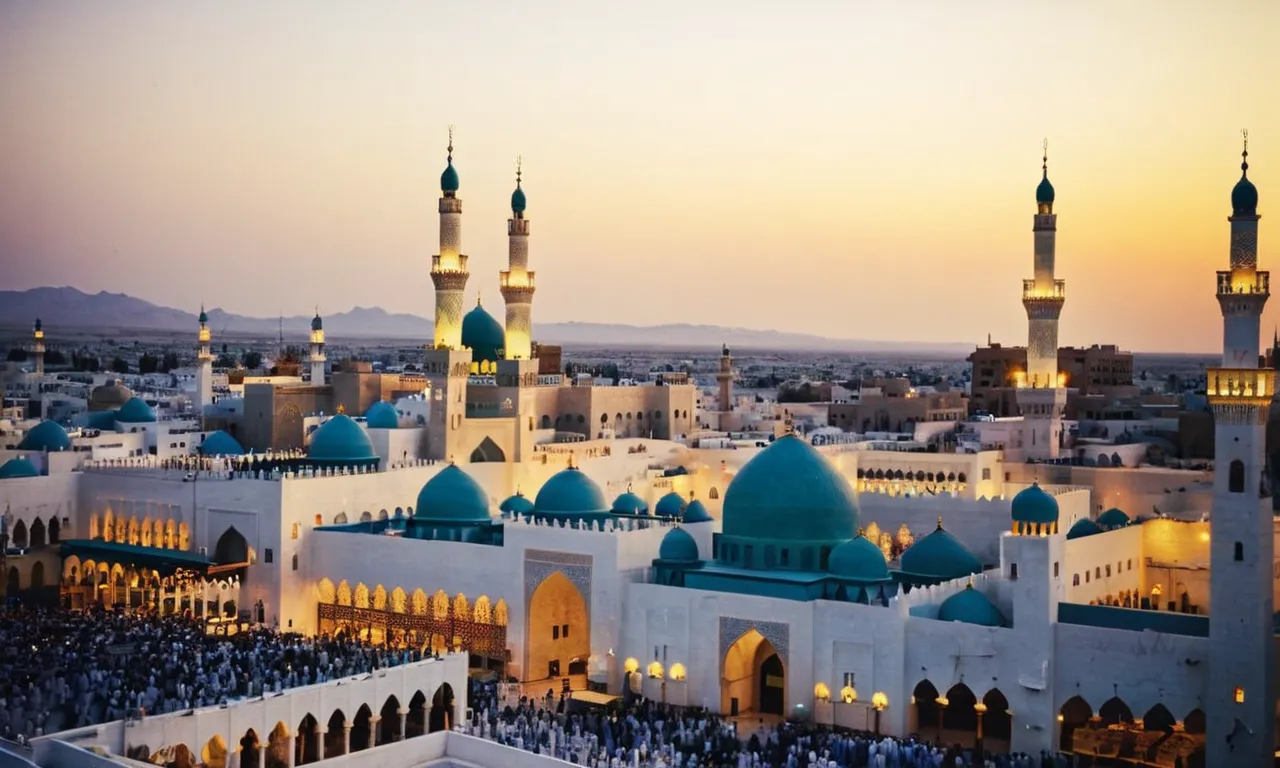How Did The Early Islamic Empire Expand?
The early spread of Islam is one of the most pivotal events in world history, leading to the creation of one of the largest empires the world had ever seen up to that point. If you’re short on time, here’s a quick answer to your question: The early Islamic empire expanded rapidly through a combination of military conquests, propagation of the Islamic faith, and smart administrative policies that integrated new territories into the empire. In this comprehensive guide, we will explore the key factors that allowed the early caliphs to establish control over vast swathes of territory in just a few decades following the death of the Prophet Muhammad in 632 AD.
The Expansion Under the Rashidun Caliphs
The Ridda Wars and the End of Rebellion
After the death of Prophet Muhammad in 632 CE, many Arab tribes revolted against the rule of Medina in what is known as the Ridda Wars or the Wars of Apostasy. The new caliph, Abu Bakr, managed to crush these rebellions in two years of fighting.
This ensured the continuation of Islamic rule over the Arabian Peninsula and set the stage for further expansion.
One major reason for these ridda was the refusal of some tribes to continue paying zakat tax to Medina after the Prophet’s death. They no longer felt obliged to pay since their allegiance was to Muhammad personally.
Abu Bakr was determined to enforce the authority of Medina and keep the tribes unified under central leadership. His military campaigns defeated rebel tribes throughout Arabia, including those led by Tulayha, Musaylima, and Sajjah.
By 634 CE, the Ridda Wars solidified Abu Bakr’s control over Arabia. This laid the foundations of the Rashidun Caliphate and demonstrated the caliph’s ability to project power beyond Medina. The wars played a key role in quashing separatism and cementing the political unity of the new Islamic state.
Conquests Under Caliph Umar
The major expansion of the Islamic empire occurred during the reign of the second caliph, Umar ibn al-Khattab (634-644 CE). Umar was an effective military strategist and administrator who centralized caliphal authority.
Under Umar’s command, Arab armies conquered the Sasanian Empire and seized the territories of Iraq, Iran and parts of Central Asia that had been Persian provinces. This expansion was aided by internal Persian weaknesses, such as overextension of the military.
The decisive Battle of al-Qadisiyyah in 637 CE led to the fall of the Sasanian capital Ctesiphon. With this victory, the Arabs gained control over the Tigris-Euphrates valley.
Arab forces also conquered much of the Byzantine Empire’s territories in Syria, Palestine, and Egypt during Umar’s rule. A key battle was the 636 CE Battle of Yarmouk in Syria, which paved the way for the capture of Jerusalem and Damascus.
Syria and Egypt were valuable additions because of their agricultural production.
In just over ten years, the Rashidun Caliphate under Umar expanded from governing a tribe in Arabia to having authority over an empire stretching from Libya to Afghanistan. Efficient organization and disciplined troops motivated by jihad contributed to this rapid growth.
Conquests Under Caliph Uthman
The third caliph, Uthman ibn Affan (644-656 CE), continued the meteoric expansion of Islamic rule into new territories. He pushed the northern boundaries of the caliphate further by initiating invasions into Armenia and modern-day Azerbaijan.
Arab forces took control of Arran, Azerbaijan and reached the Caucasus Mountains by 650 CE.
Uthman also oversaw the conquest of Cyprus in 649 CE and Rhodes in 654 CE, helping secure Arab naval dominance in the Mediterranean Sea. This enabled the Arabs to increase trade revenues enormously.
Control over North Africa was strengthened with advances westward into modern Libya, Tunisia and Morocco. These gains added valuable Mediterranean ports and fertile agricultural land to the caliphate.
Uthman’s reign marked the peak of Arab military success. Within 30 years, the Rashidun Caliphate had expanded over 5 million square miles from a small state in western Arabia to include most of the Middle East, Egypt and North Africa.
This was one of the most dramatic cases of empire building in world history.
Brilliant Military Strategies
Tactical Maneuvers and Skilled Commanders
The early Islamic empire expanded rapidly in part due to brilliant military strategies and tactics employed by skilled commanders. The Muslim forces were highly disciplined and able to execute complex maneuvers on the battlefield under the direction of strategists like Khalid ibn al-Walid.
Al-Walid was a master of maneuver warfare, luring enemies into vulnerable positions before enveloping them with swift flanking attacks. He pioneered the extensive use of mounted archers, giving his armies greater mobility and range.
Other innovative tactics included feigned retreats to draw opponents into ambushes, sustaining offensives through the rotation of fresh cavalry units, and the effective coordination of infantry and cavalry forces.
Superior mobility allowed the Muslim armies to outflank larger forces and strike vulnerable areas before opponents could react.
Use of Intelligence Before Battle
The early Islamic commanders placed a strong emphasis on gathering intelligence before battles. They made use of spies and scouting units to gain information on enemy positions, strengths, and intentions. This enabled them to avoid potential traps and better plan for enemy contingencies.
For example, at the Battle of Yarmouk against the Byzantines in 636 CE, Khalid ibn al-Walid utilized local Bedouin tribesmen to ascertain the Byzantine plans in advance.
The intelligence advantage often allowed the Muslim armies to choose advantageous terrain for engagements and spring ambushes. They would conceal the bulk of their forces until the optimum time to strike. Essentially, knowledge proved crucial to the calibrated application of force.
Technology Like the Camel Cavalry
The Muslim forces also made effective use of technologies like the camel cavalry, which gave them a significant tactical edge. The camel was ideally suited for desert warfare with great endurance and speed.
Camel cavalry units could travel long distances, strike with surprise, and elude enemy retaliation.
At the Battle of Dhat al-Salasil in 650 CE, 5000 camel cavalry decimated a Persian force of 200,000. The mobility, range, and shock power of the camel cavalry helped enable the stunning Muslim conquests of Mesopotamia, Syria, Egypt, and Persia in an incredibly short time span.
Adoption and mastery of useful technologies amplified the maneuverability and power of the Islamic forces.
Propagation of Islam
Missionary Efforts of Settlers
In the early centuries of Islamic expansion, Muslim settlers played a key role in spreading the faith to new regions. As traders, merchants, and travelers ventured beyond the Arabian Peninsula into Persia, Central Asia, and North Africa, they brought Islam with them.
Some engaged directly in missionary work, actively preaching to and converting local populations. Others practiced their faith openly in their adopted communities, leading many to convert by example. Intermarriage between Muslim men and local women also enabled the faith to take root.
By welcoming converts as brothers and sisters, early Muslims fostered Islamic growth beyond ethnic lines.
Reduced Taxes for Converts
Financial incentives were often used to encourage conversion to Islam in conquered territories. Muslim rulers typically imposed a special tax called jizya on non-Muslims under their domain. Those who converted were exempt from this tax, providing a strong financial motive to embrace the faith.
Some scholars argue economic factors were the primary driver of early conversions, as rulers selectively lowered or waived taxes to reward converts. However, others caution that tax policies alone fail to fully explain Islam’s expansion.
While economic advantages may have spurred some to convert, spiritual conviction and favorable perceptions of Muslim rule were likely stronger motivators for most.
Appeal of Islamic Beliefs
Beyond material incentives, many were genuinely drawn to Islamic theology and principles. Islam’s simple, direct creed of monotheism and its ethical teachings against social ills like gambling, alcoholism, and exploitation of the poor resonated widely.
The Qur’an’s messages of human equality and opportunity for salvation appealed across class lines. Converts often came from marginalized groups attracted to Islam’s ideals of justice and unity. Additionally, Muslims tolerated other “People of the Book” like Jews and Christians, allowing diversity under their rule.
While forced conversions did occur at times, they remained relatively limited. For most early converts, choice not compulsion was the road to Islam. Though political and economic factors played a role, the religion’s values and beliefs were the prime mover of its expansion.
Pragmatic Political Administration
Co-opting Local Elites
As the early Islamic Empire expanded, the conquering Arabs often co-opted local elites to help them govern newly acquired territories. By allowing local rulers and nobles to retain their positions and wealth, the Arabs were able to secure the cooperation of influential locals who could help pacify the general population.
This pragmatic approach allowed the Empire to consolidate control quickly without the need to establish complex administrative structures from scratch.
For example, in Egypt the Arabs made deals with the Coptic nobility to collect taxes and maintain order on behalf of the Caliphate. In return, the Copts could continue living much as they had before the Islamic conquests.
This co-opting of local elites facilitated the integration of Egypt into the Islamic Empire with minimal resistance or instability.
Leaving Local Laws and Customs
The early Caliphs also often allowed continuity of pre-existing legal codes and social customs under their rule. As long as local laws did not directly conflict with Islamic beliefs and practices, the conquerors saw benefit in allowing familiar legal and cultural traditions to remain intact.
This tolerance for diversity facilitated imperial expansion and consolidation by reducing unrest. For instance, the Arab general who conquered Persia agreed to let Zoroastrian courts continue to settle most civil disputes among Zoroastrians based on traditional Persian legal principles.
This continuity promoted social stability and economic vitality during the transition to Islamic rule.
Building Infrastructure
The early Caliphs funded extensive infrastructure projects in newly conquered territories which served to project imperial power and integrate these regions economically. Vast irrigation works, roads, fortresses, mosques and administrative buildings transformed the urban landscape of cities in the Middle East and North Africa.
For example, the Umayyad dynasty invested heavily in upgrading the infrastructure of Damascus and Jerusalem to cement imperial control over Syria and Palestine. As the bureaucracy and military came to rely on this infrastructure, local elites were increasingly tied to and invested in the Caliphate’s order and stability.
This dependency on the Islamic Empire’s physical apparatus of power prevented effectively autonomy.
Conclusion
In just over 100 years after the death of Prophet Muhammad, the Rashidun and Umayyad caliphs were able to construct a vast empire spanning from Spain in the west to the borders of India in the east. This was made possible by the dynamism of the early caliphs, the inspired spirit of the Muslim armies, the inclusive nature of the Islamic faith, and pragmatic administrative policies.
The rapid expansion of the early Islamic empire reshaped the political and cultural contours of the medieval world.








